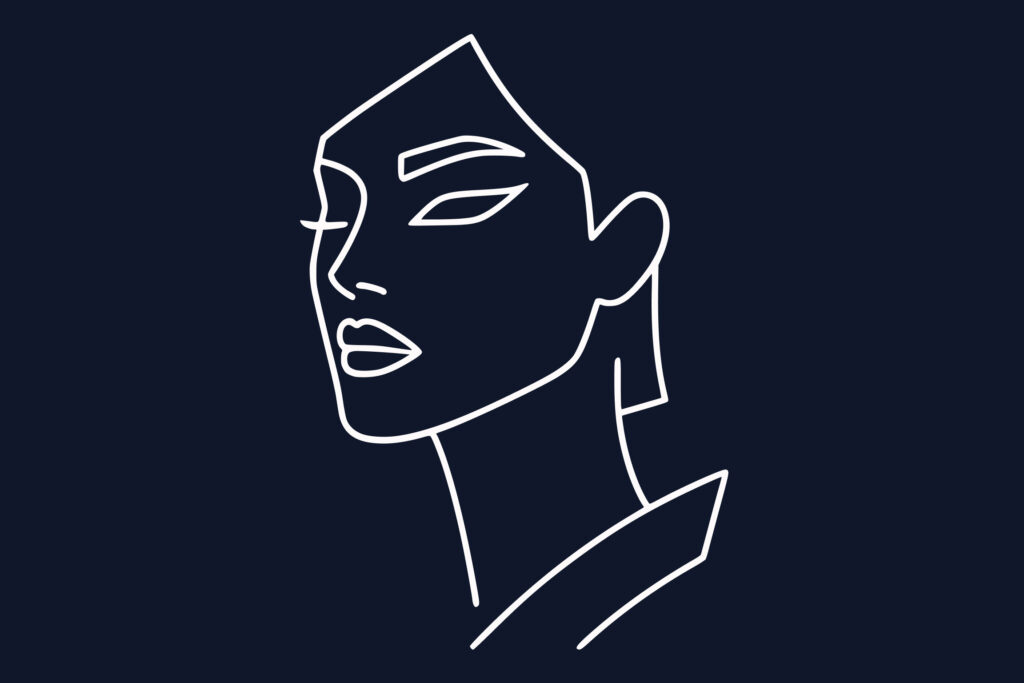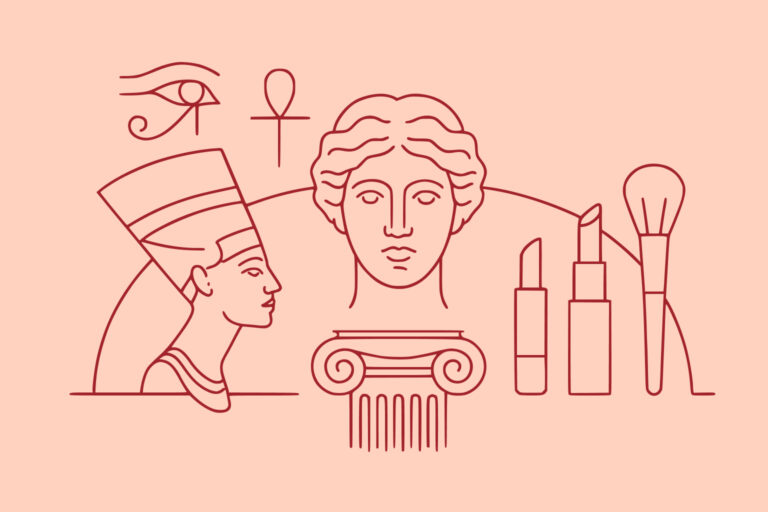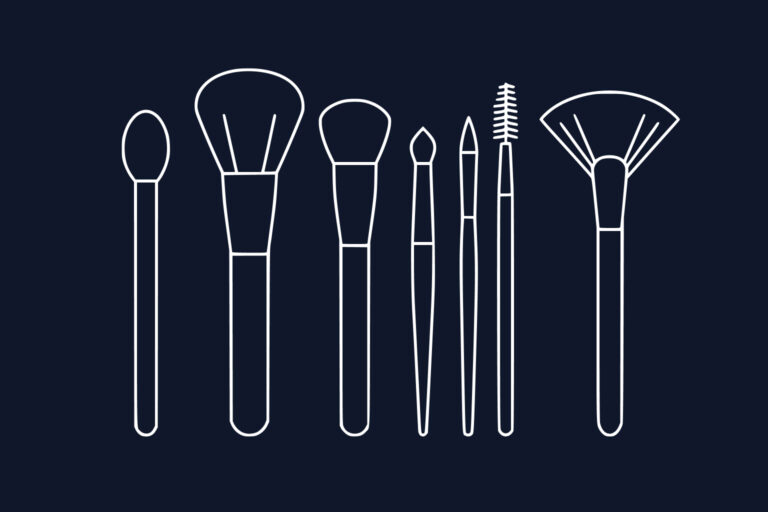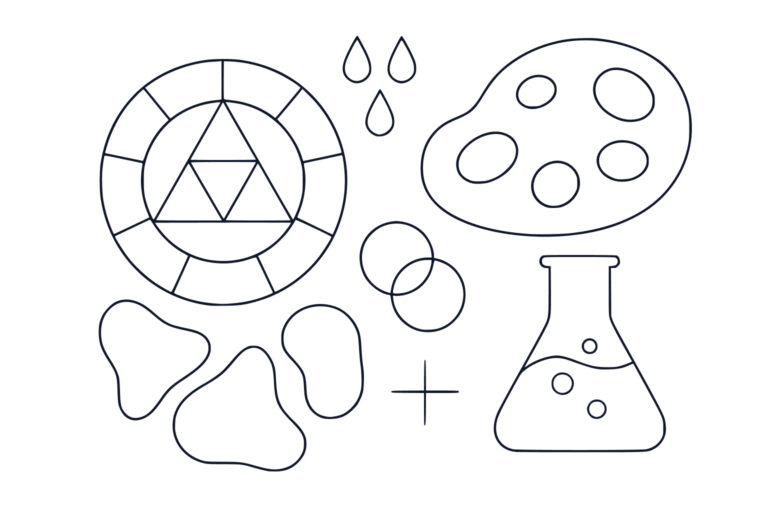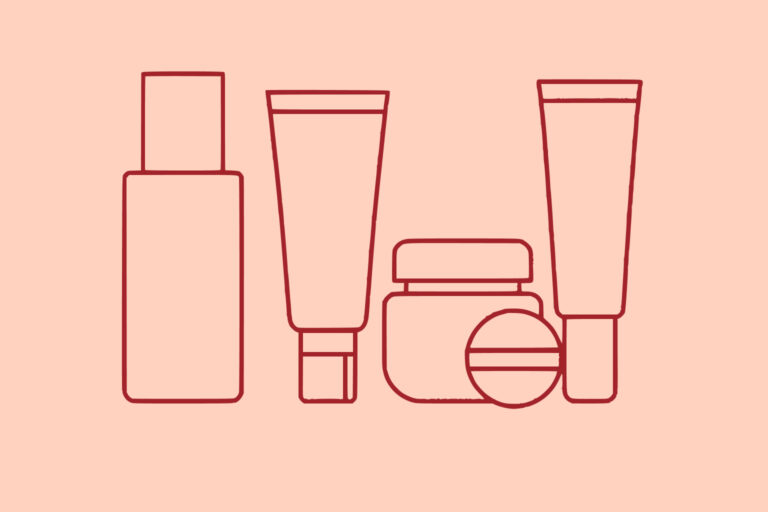1980s Power Dressing and Bold Beauty: The Decade of Maximum Impact
Published by Professional Makeup Artist London
The 1980s represented the ultimate expression of maximalist beauty culture, where “more is more” became the defining philosophy for makeup, hair, and personal presentation. This decade rejected the natural aesthetics and earth tones of the 1970s in favour of bold colours, dramatic techniques, and architectural styling that reflected the era’s economic prosperity and cultural confidence. From the power-suited boardroom to the neon-lit nightclub, 1980s beauty was designed to make statements, command attention, and project success. Understanding this pivotal decade reveals how economic conditions, technological advancement, and cultural attitudes can create beauty trends that prioritise impact and visibility above all other considerations.
The Power Dressing Revolution
The 1980s power dressing movement fundamentally transformed professional beauty standards, as women entering corporate environments in unprecedented numbers required makeup and hairstyles that projected authority, competence, and success.
Power makeup was characterised by strong, defined features that could hold their own in male-dominated business environments. This involved bold eyebrows, precisely applied foundation, and lip colours that commanded respect whilst maintaining professional appropriateness.
The power suit demanded complementary makeup that balanced femininity with authority. This required sophisticated understanding of colour coordination, with makeup tones selected to enhance rather than compete with the structured clothing that defined professional dress.
Contouring techniques became essential for power dressing, as women learned to use highlighting and shading to create strong facial structure that projected confidence and competence. These techniques were more dramatic than previous decades but remained within professional boundaries.
Eye makeup for power dressing emphasised definition and intensity without crossing into theatrical territory. This involved precise eyeliner application, carefully blended eyeshadows in sophisticated colour palettes, and mascara techniques that created impact whilst maintaining polish.
The power dressing movement established new standards for professional beauty that balanced feminine appeal with authoritative presence, creating templates that continue to influence contemporary workplace beauty standards.
Understanding how professional environments influence beauty choices provides valuable context for modern makeup application in business settings.
Big Hair: Architecture and Engineering
The 1980s elevated hair styling to architectural heights, with volume, structure, and dramatic silhouettes becoming more important than natural texture or movement. This represented the ultimate expression of artificial enhancement over natural beauty.
The creation of 1980s big hair required sophisticated understanding of hair structure, product application, and styling techniques. Achieving the characteristic volume demanded backcombing, strategic product placement, and careful construction to maintain shapes throughout the day.
Hairspray became the decade’s most essential styling product, with formulations that provided unprecedented hold and structure. The amount of hairspray used during this period was legendary, with some styles requiring multiple applications to maintain their architectural integrity.
Hot rollers, curling irons, and blow dryers were used in combination to create the complex textures and volumes that defined 1980s hairstyles. This required significant time investment and technical skill to achieve professional-looking results.
The asymmetrical cuts that became popular during this period required precise technical execution and regular maintenance to preserve their dramatic shapes. These cuts represented the influence of avant-garde fashion on mainstream hairstyling.
Hair accessories played crucial roles in 1980s styling, with headbands, scrunchies, and decorative clips serving both functional and aesthetic purposes. These accessories often featured bold colours and metallic finishes that complemented the decade’s maximalist aesthetic.
The engineering required for 1980s hair established new standards for styling complexity and product performance that influenced hair care industry development for decades.
Neon and Electric: The Colour Revolution
The 1980s introduced the most dramatic colour palettes in makeup history, with electric blues, shocking pinks, and neon greens becoming not just acceptable but fashionable for everyday wear.
Neon eyeshadows required new formulation technologies to achieve the intense colour payoff that defined the decade’s aesthetic. These products often featured synthetic pigments and reflective particles that created the electric effects that were characteristic of 1980s makeup.
The application of bold colours required sophisticated blending techniques to create wearable looks that maintained impact without appearing crude. This demanded higher levels of technical skill and colour theory understanding than previous decades.
Colour coordination became more complex during this period, as makeup artists learned to balance multiple bold colours within single looks whilst maintaining harmony and visual appeal.
The influence of music videos and MTV culture on colour choices cannot be overstated, as the medium’s technical requirements and aesthetic preferences directly influenced mainstream beauty trends.
Metallic finishes gained unprecedented popularity during this period, with silver, gold, and iridescent effects appearing in eyeshadows, lipsticks, and nail polishes that reflected the decade’s fascination with technology and luxury.
Understanding how media and technology influence colour selection and application provides insights for contemporary makeup artistry in the digital age.
Contouring and Sculpting: The Birth of Modern Techniques
The 1980s marked the emergence of sophisticated contouring techniques that would later become fundamental to contemporary makeup artistry. This decade established many of the principles and methods that define modern facial sculpting.
The dramatic contouring that characterised 1980s makeup required understanding of facial anatomy and light placement that went far beyond previous decades’ subtle enhancement techniques. This represented a shift towards viewing makeup as sculptural art rather than simple enhancement.
Highlighting techniques became more sophisticated during this period, with makeup artists using light-reflecting products to create dimension and structure that complemented the era’s bold aesthetic preferences.
The tools and products available for contouring expanded significantly during the 1980s, with new formulations and application implements that allowed for more precise and dramatic effects than had been previously possible.
Professional makeup artistry gained increased recognition during this period, with celebrity makeup artists becoming public figures whose techniques influenced mainstream beauty culture.
The integration of contouring with other makeup techniques created more complex and sophisticated looks that required higher levels of skill and understanding to execute successfully.
The contouring innovations of the 1980s established foundations for the advanced facial sculpting techniques that dominate contemporary makeup artistry.
Celebrity Culture and Media Influence
The 1980s saw the emergence of modern celebrity culture, with music videos, television, and film creating new platforms for beauty influence that had unprecedented reach and impact.
MTV’s launch in 1981 revolutionised how beauty trends developed and spread, with music videos providing detailed, repeated exposure to specific makeup and hair looks that could be studied and copied by viewers.
Pop stars like Madonna, Cyndi Lauper, and Annie Lennox became beauty icons whose looks were widely copied and adapted. Their willingness to experiment with bold colours and dramatic techniques pushed the boundaries of acceptable mainstream beauty.
Television shows like Dynasty and Dallas showcased glamorous beauty looks that influenced aspirational beauty standards. The elaborate makeup and hairstyles featured on these programmes demonstrated the possibilities of maximalist beauty approaches.
The emergence of the supermodel phenomenon during this period brought increased attention to professional makeup artistry and the techniques used to create high-fashion beauty looks.
Celebrity endorsement of beauty products became more sophisticated and influential during the 1980s, with stars lending their names and images to cosmetic lines that promised to recreate their signature looks.
Understanding how media platforms influence beauty trends provides valuable insights for contemporary makeup artists working in the digital age.
Technological Innovation and Product Development
The 1980s brought significant technological advances in cosmetic formulation and application tools that supported the decade’s demanding aesthetic requirements.
Foundation technology advanced considerably during this period, with new formulations offering better coverage, longer wear, and more sophisticated colour matching. These improvements were essential for achieving the flawless bases that 1980s makeup demanded.
Eyeshadow formulations improved dramatically to provide the intense colour payoff and blendability that the decade’s bold looks required. New pressing techniques and ingredient combinations created products with superior performance characteristics.
Mascara technology evolved to provide the dramatic lash effects that were central to 1980s eye makeup. New brush designs and formulations allowed for greater volume and definition than had been previously possible.
Hair care products underwent significant innovation during this period, with new styling aids, hairsprays, and treatment products that supported the complex hairstyles that defined the decade.
Application tools became more sophisticated, with improved brushes, sponges, and styling implements that allowed for greater precision and better results in both makeup and hair styling.
The technological innovations of the 1980s established many of the performance standards and product categories that define modern cosmetic formulation and development.
Fitness Culture and Athletic Beauty
The 1980s fitness boom significantly influenced beauty trends, with the aerobics craze and health club culture creating new requirements for makeup and hairstyles that could withstand physical activity whilst maintaining appeal.
Workout makeup required long-wearing formulations that could survive perspiration and physical activity whilst still providing coverage and enhancement. This led to innovations in waterproof and sweat-resistant cosmetics.
The headband became an iconic accessory of the decade, serving both functional and aesthetic purposes. These accessories often featured bold colours and patterns that complemented workout attire and hairstyles.
Athletic hairstyles needed to be both practical and attractive, leading to innovations in styling techniques that created volume and interest whilst keeping hair secure during physical activity.
The influence of fitness culture on beauty standards emphasised health, vitality, and energy as desirable qualities that should be reflected in makeup and styling choices.
Tanning culture reached new heights during the 1980s, with bronzed skin becoming associated with health, leisure, and attractiveness. This influenced foundation shades, bronzing products, and overall colour palettes.
The integration of fitness and beauty culture established precedents for the wellness-focused approach to cosmetics that characterises contemporary beauty trends.
Nightlife and Club Culture
The 1980s nightclub scene created demand for theatrical makeup and hairstyles that could make impact in dramatic lighting conditions whilst expressing individual creativity and style.
Club makeup featured bold colours, metallic finishes, and dramatic application techniques that were designed to look striking under coloured lights and maintain their impact throughout long nights of dancing.
The New Romantic movement influenced beauty trends with its emphasis on androgyny, theatrical presentation, and artistic self-expression. This movement pushed the boundaries of acceptable makeup use for both men and women.
Punk and new wave influences brought edgy, rebellious elements to mainstream beauty culture, with dramatic eyeliner, unconventional colours, and asymmetrical styling becoming more widely accepted.
The club environment demanded makeup that could withstand heat, humidity, and physical activity whilst maintaining its dramatic impact. This led to innovations in long-wearing formulations and setting techniques.
Hair styling for nightlife required products and techniques that could maintain elaborate shapes and volumes despite challenging environmental conditions.
The influence of club culture on beauty trends demonstrated how subcultural movements could impact mainstream cosmetic development and aesthetic preferences.
International Influence and Global Exchange
The 1980s marked the acceleration of global beauty culture exchange, with international fashion, music, and media creating unprecedented cross-cultural influence on beauty trends.
Japanese fashion and beauty culture gained significant influence during this period, with designers and beauty brands introducing new aesthetic concepts and product innovations that affected global markets.
European fashion weeks became increasingly important for beauty trend development, with makeup artists and hairstylists from Paris, Milan, and London influencing international beauty standards.
The emergence of global beauty brands and international marketing strategies began to standardise certain beauty practices whilst also celebrating cultural diversity and local preferences.
International travel and communication improvements allowed for faster spread of beauty trends across cultural boundaries, creating more homogenised global beauty culture.
The influence of international pop culture, particularly from the UK and US, spread beauty trends through music videos, films, and television programmes that reached global audiences.
This globalisation of beauty culture established patterns of international influence and cultural exchange that continue to shape contemporary beauty trends and industry practices.
Economic Prosperity and Luxury Beauty
The economic prosperity of the 1980s enabled increased spending on beauty products and services, creating demand for luxury cosmetics and professional beauty treatments that had been previously accessible only to the wealthy.
Department store beauty counters expanded significantly during this period, with elaborate displays and professional consultation services that made luxury cosmetics more accessible to middle-class consumers.
The emergence of prestige beauty brands and luxury product lines reflected the decade’s emphasis on status, quality, and conspicuous consumption.
Professional beauty services, including makeup application and hair styling, became more widely available and socially acceptable for regular use rather than just special occasions.
The beauty industry’s marketing became more sophisticated during this period, with advertising campaigns that emphasised luxury, status, and professional quality.
Economic confidence influenced beauty choices, with consumers willing to experiment with bold colours and dramatic techniques that reflected their optimism and success.
The luxury beauty culture established during the 1980s created precedents for the premium cosmetics market that continues to drive industry growth and innovation.
Technical Skills and Professional Development
The complexity of 1980s beauty looks required higher levels of technical skill and professional training than previous decades, leading to advances in beauty education and professional development.
Makeup artistry became recognised as a legitimate profession during this period, with formal training programmes and certification systems that established industry standards and practices.
The technical demands of 1980s hairstyling led to advances in cosmetology education, with new curricula that addressed the complex cutting, colouring, and styling techniques that the decade required.
Professional makeup artists gained increased recognition and status during this period, with celebrity artists becoming public figures whose techniques influenced mainstream beauty culture.
The development of specialised tools and products for professional use created distinctions between consumer and professional beauty markets that continue to influence industry structure.
Beauty competitions and industry awards became more prominent during this period, establishing standards for technical excellence and creative achievement.
The professional development that occurred during the 1980s established foundations for contemporary beauty education and industry practices.
Social and Cultural Impact
The beauty trends of the 1980s reflected and influenced broader social changes that transformed Western culture during this dynamic decade.
The decade’s emphasis on individual success and self-expression influenced beauty culture by promoting bold, attention-getting looks that projected confidence and ambition.
Changing gender roles and women’s increased participation in professional environments influenced beauty standards, with looks that balanced femininity with authority becoming increasingly important.
The decade’s consumer culture and emphasis on material success influenced beauty spending patterns, with cosmetics and beauty services becoming symbols of prosperity and status.
Youth culture continued to influence beauty trends, with young people driving innovation in colours, techniques, and aesthetic preferences.
The period’s embrace of technology and modernity influenced beauty product development and marketing, with emphasis on innovation, performance, and scientific advancement.
The social changes of the 1980s established new paradigms for beauty culture that continue to influence contemporary trends and consumer behaviour.
Legacy and Modern Influence
The bold beauty innovations of the 1980s continue to influence contemporary makeup and hairstyling, with many techniques and aesthetic principles remaining relevant today.
The contouring techniques developed during this period established foundations for the advanced facial sculpting methods that dominate contemporary makeup artistry. Modern artists study 1980s techniques to understand fundamental principles of dimension and structure.
The decade’s approach to bold colour and dramatic application established precedents for contemporary editorial and fashion makeup artistry. Modern artists draw on 1980s techniques for creating impactful, memorable looks.
Product innovations from this period, particularly in foundation, eyeshadow, and hair care formulation, established many of the performance standards that define modern cosmetics.
The professional makeup artistry that emerged during the 1980s created the foundation for contemporary beauty industry structure and practices.
The decade’s integration of media influence and celebrity culture established patterns that continue to drive beauty trend development and consumer behaviour.
Understanding this historical development provides valuable context for contemporary approaches to dramatic makeup artistry and professional beauty practices.
Recreating 1980s Looks Today
Modern makeup artists and beauty enthusiasts can recreate authentic 1980s looks using contemporary products and techniques adapted from historical methods.
Achieving the bold eye looks that characterised the decade requires precise colour application and blending techniques that create impact whilst maintaining wearability. Modern products offer better performance than period cosmetics whilst maintaining the dramatic effects that defined the style.
The power dressing makeup that was central to 1980s professional beauty can be recreated using contemporary contouring and highlighting techniques that project authority whilst remaining appropriate for modern workplace environments.
Big hair styles can be created using modern styling tools and products that offer better hold and easier application than 1980s formulations whilst maintaining the volume and structure that defined the look.
The neon and electric colours that were signature elements of 1980s makeup can be achieved using contemporary formulations that provide better colour payoff and longer wear than period products.
Understanding the fundamental principles behind 1980s techniques allows modern artists to adapt these looks for contemporary clients whilst maintaining their essential character and cultural significance.
Conclusion
The 1980s beauty revolution represents one of the most influential and technically demanding periods in cosmetic history, establishing new standards for professional artistry, product performance, and cultural impact that continue to shape contemporary beauty culture. From power dressing makeup to big hair architecture, this decade demonstrated how economic prosperity, technological advancement, and cultural confidence could create beauty trends that prioritised maximum impact and visibility.
The period’s innovations in contouring techniques, colour application, and professional artistry established technical and aesthetic foundations that remain central to modern makeup practice. The decade’s integration of media influence, celebrity culture, and luxury consumption created precedents for contemporary beauty industry structure and consumer behaviour.
Understanding the 1980s beauty revolution provides valuable context for appreciating contemporary trends and techniques. The decade’s emphasis on technical skill, dramatic impact, and professional quality continues to influence how we approach beauty artistry and product development today.
Whether exploring the sophisticated techniques of power dressing or the theatrical drama of club culture, the 1980s offers rich inspiration and practical knowledge that remains vital for contemporary beauty practice and cultural understanding of how external forces shape aesthetic preferences and industry development.
Ready to master the bold techniques of 1980s beauty? Book a professional makeup consultation to learn how to recreate these dramatic looks using modern products and techniques tailored to your unique features and contemporary lifestyle.
